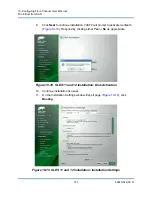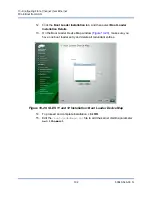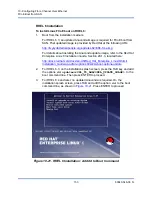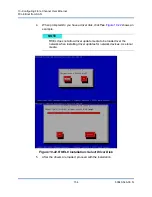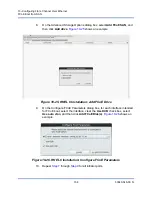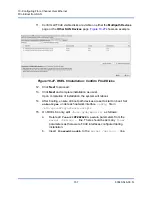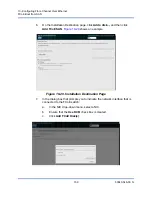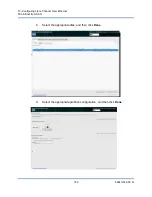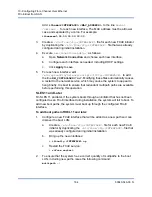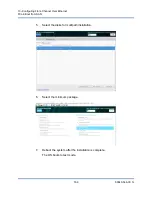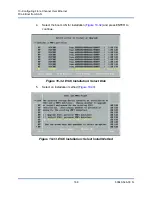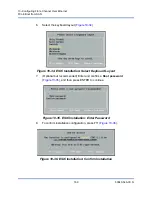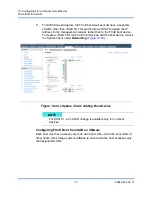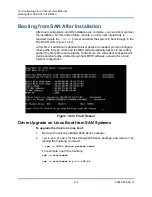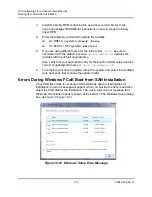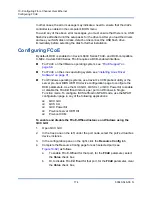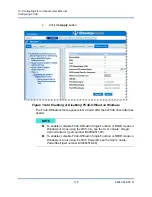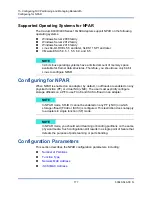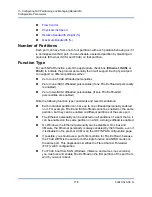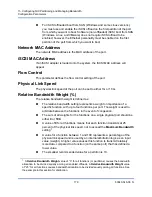
10–Configuring Fibre Channel Over Ethernet
FCoE Boot from SAN
164
83840-546-00 N
Add
ifname=<INTERFACE>:<MAC_ADDRESS>
to the line
kernel
/vmlinuz …
for each new interface. The MAC address must be all lower
case and separated by a colon. For example:
ifname=em1:00:00:00:00:00:00
3.
Create a
/etc/fcoe/cfg-<INTERFACE>
file for each new FCoE initiator
by duplicating the
/etc/fcoe/cfg-<INTERFACE>
file that was already
configured during initial installation.
4.
Execute
nm-connection-editor
as follows:
a.
Open
Network Connection
and choose each new interface.
b.
Configure each interface as needed, including DHCP settings.
c.
Click
Apply
to save.
5.
For each new interface, edit
/etc/sysconfig/network-scripts/ifcfg-<INTERFACE>
to add
the line
NM_CONTROLLED="no"
. Modifying these files automatically causes
a restart to the network service, which may cause the system to appear to
hang briefly. It is best to ensure that redundant multipath paths are available
before performing this operation.
SLES 11 and Later
On SLES 11 and later, if the system boots through an initiator that has not been
configured as an FCoE interface during installation, the system will fail to boot. To
add new boot paths, the system must boot up through the configured FCoE
interface.
To add boot paths in RHEL 11 and later:
1.
Configure a new FCoE interface that will be added as a new path so it can
discover the boot LUN.
a.
Create a
/etc/fcoe/cfg-<INTERFACE>
file for each new FCoE
initiator by duplicating the
/etc/fcoe/cfg-<INTERFACE>
file that
was already configured during initial installation.
b.
Bring up the new interfaces:
#
ifconfig <INTERFACE> up
c.
Restart the FCoE service:
#
rcfcoe restart
2.
To ensure that the system has a correct quantity of multipaths to the boot
LUN, including new paths, issue the following command:
multipath -
l


